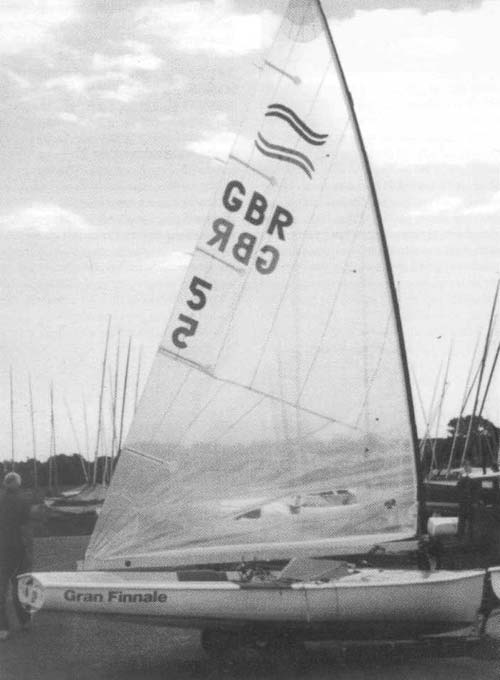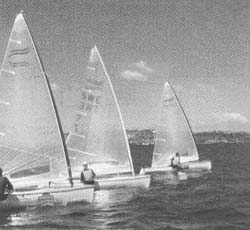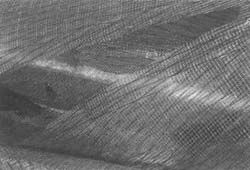32. Plastic Fantastic - a new chapter in sail development |
by Mickey Ickert |
|
|
The Finn Dinghy has been at the fore front of development and new technology from its earliest days and always kept pace with new yachting technology. The sails are an example of how a class 50 years old can be stringed in one- design rules although be avante-garde in development. The rule for specific sailcloth has been relaxed since 1981 in the hay days of 3.8 oz soft Dacron Finn specs. The early '80s showed some new fabrics appearing and
the class didn't see a threat in allowing any fabric into the rule as the specific needs for the Finn did not see any of those fabrics making a big change in performance. At the time I myself worked at North Sails in Germany and we built a Finn sail out of the early kevlar scrims. The sail was dismissed very early on and it seemed to prove the point that you have to use a soft sleazy fabric to build Finn sails. I remember using the discarded sail on a training ran and it was so bad the Finn didn't sail up wind at all and I had to reach back and forwards to get home like a wind surfer ... the new type fabrics were dead for the next 14 years or so.
During the 1994-95 America's Cup, Craig Monk approached me and asked us if we would be interested in building him a Finn sail. As the 1992 Olympic Bronze Medalist he was interested in working with a team of people which proved to be able to design the fastest America's Cup sails. The initial reaction from our side was pretty subdued. We believed there was not much point in building a Dacron sail as there were plenty of sailmakers which did a good job at the time, all using sails which had somehow been derived from the early '70s John Bertrand (the Australian) design.
|
 |
|
 |
Those sails and the design concept were very refined and had been developed over the last 20 years or more. However, we looked at the Finn dinghy rale regarding sails again to see how much scope there was to do something different. And to my surprise 15 years later the fabric for the sails was still open and unused.
What Cloth to Use ?
We decided to build a sail for Craig using a Mylar scrim of some sort, but what is the right fabric? Over the years through our involvement in various America's Cups, Whitbread campaigns and other level rated events we had come across all sorts of fabrics which have been used for reaching gennakers in particular. Looking through the files and the cloth stock we came across a very promising fabric we with a bit of history... |
|
During the 1993-94 Whitbread the US entry Winston used a gennaker fabric based on .75 mil Mylar with a Vectran wrap and fill yarn. The fabric first appeared on the 1992 Stars and Stripes AC yacht. The Whitbread 60 rale at the time was not accommodating any aramid fibres for the gennaker and the sailmaker and the yacht argued that Vectran is a form of Polyester. The ruling from the Whitbread measurers allowed the fabric in and then banned it unexpected for the second leg. As the first leg was being sailed we ordered plenty of the fabric to use throughout the race. Bang, we owned a lot of a very specified fabric, very light compared to 3.8 oz soft Dacron and up to 5 times stronger with the same bias to warp ratio as a 3.8 oz soft Dacron. In 1995 the fabric seemed perfect and was used for Craig Monk's first Mylar Finn sail. The same sail was used by one of the competitors in the 1999 sail Auckland regatta.
|
 |
|
|